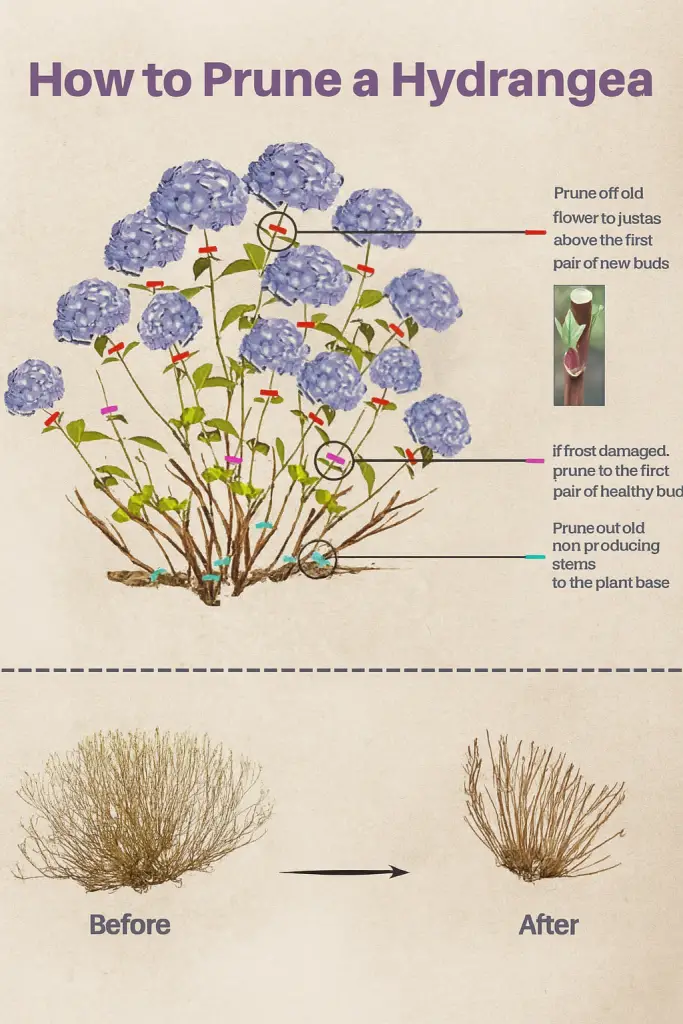
There’s something magical about a blooming hydrangea bush. Those big, puffy flower heads can turn any yard into a cheerful, colorful retreat. But if you don’t prune it right—ouch. Your beautiful plant might stop blooming altogether. Let’s break it down together and learn the right way to prune hydrangeas, without all the confusion.
Why You Should Prune Hydrangeas
It’s not just about looks. Pruning helps:
- Encourage new growth
- Promote more flowers
- Remove damaged or dead wood
- Shape the plant and control size
If you’ve skipped pruning before because you were scared to mess it up, don’t worry. Most folks have been there. The good news? It’s not as hard as it seems.
When’s the Best Time to Prune?
Most hydrangeas should be pruned after they bloom, usually in late summer or early fall. But it really depends on the type you have:
- Bigleaf (Hydrangea macrophylla) – Prune after flowering
- Oakleaf (Hydrangea quercifolia) – Also prune after blooms fade
- Panicle (Hydrangea paniculata) – Prune in late winter or early spring
- Smooth (Hydrangea arborescens) – Same, late winter or early spring
Knowing your plant type is key here. If you prune at the wrong time, you might cut off next season’s blooms. (And yes, I’ve done that. Lesson learned.)
Step-by-Step: How to Prune a Hydrangea
Here’s what you saw in the image, simplified:
1. Remove Old Blooms
- Cut just above the first pair of healthy buds.
- Don’t snip randomly—look closely for those little green buds.
2. Check for Frost Damage
- Got stems that look dead or shriveled? Trim them back to the first set of healthy buds.
- If it’s black or squishy, it’s gotta go.
3. Cut Out Non-Producing Stems
- Look at the base of the plant.
- Snip any stems that aren’t putting out leaves or flowers. These are energy hogs.
Quick Comparison Table
| Task | What To Look For | Where To Cut |
|---|---|---|
| Remove old flowers | Faded blooms, dried petals | Just above new buds |
| Frost-damaged stems | Blackened or mushy stems | First pair of healthy buds |
| Non-producing stems | No leaves/flowers forming | Right at the base of the plant |
Common Mistakes (Yep, We’ve All Done Them)
- Cutting too low: You’ll kill new buds.
- Pruning in spring (for old wood bloomers): Say goodbye to flowers that year.
- Not pruning at all: Your plant might turn into a woody mess.
Tips for Healthier Hydrangeas After Pruning
- Water well after trimming to reduce stress.
- Add compost or mulch around the base (but not touching the stems).
- Keep an eye out for pests—they love fresh cuts.
Conclusion
Pruning hydrangeas isn’t some elite gardening skill—it’s just knowing what to cut and when. Take it one step at a time, follow the signs your plant gives you, and don’t overthink it. Even if you mess up a little, plants are forgiving. Next season, you’ll know even better.
So grab those shears, trust your eye, and go give that hydrangea some love. Your garden will thank you for it.

